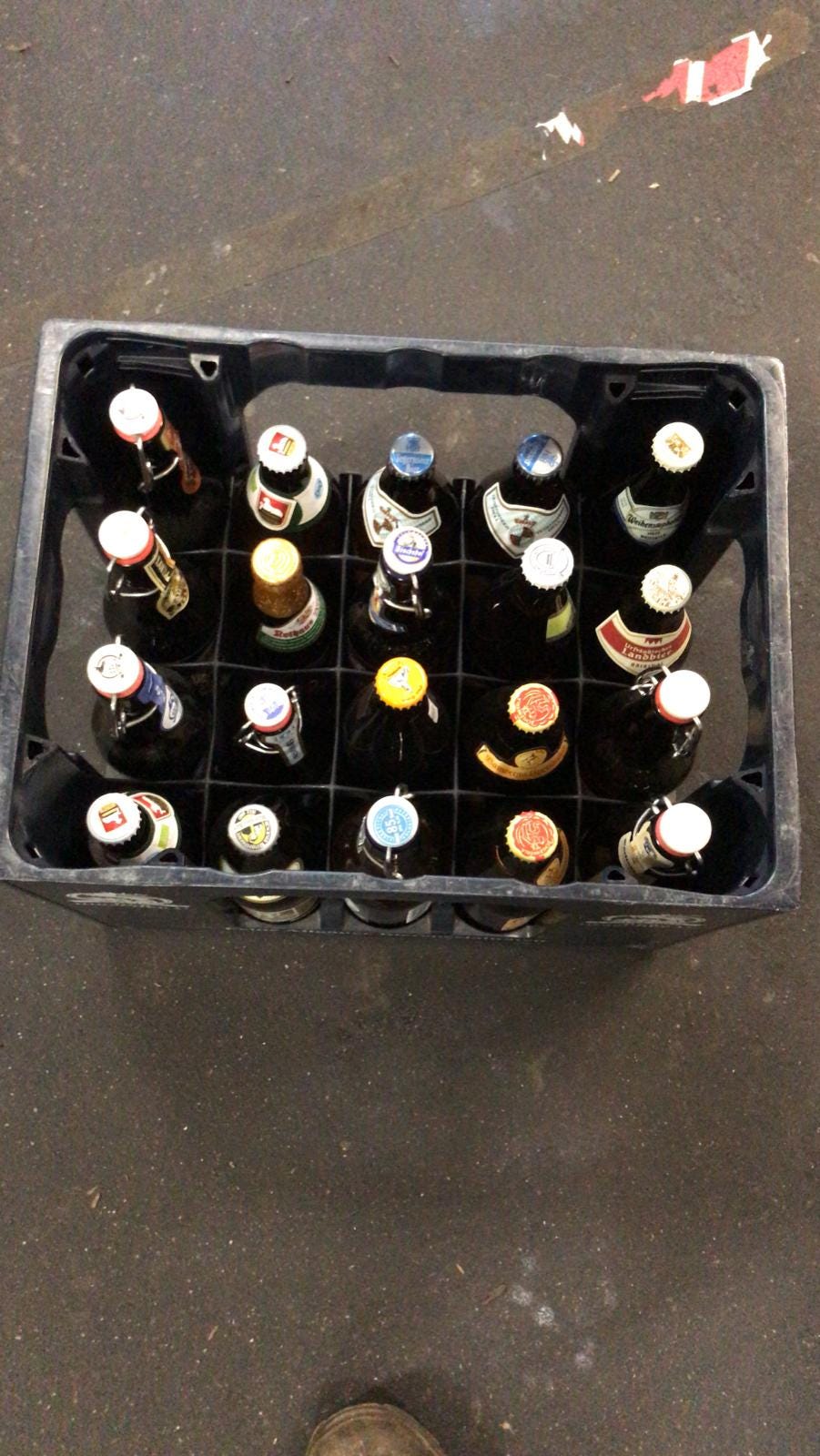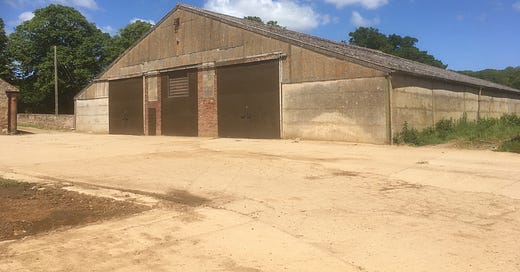The header of this article may sound rather spicy but I am not referring to architectural or musical styles and I am not writing a philippic against modernism in general. The subtitle needs to be read in a very precise way. I do not mean that modernism has distorted tradition by way of replacement. What I mean is that modernity has changed many practices so much that what is considered to be traditional and in a certain way conventional no longer has much in common with what is really, historically traditional. There are a couple of disciplines I’m talking about here, and they’re not the celebrated academic ones of architecture or music for example. I’m talking about the jobbing crafts of agriculture, of cider, beer and winemaking.
Let’s start with “conventional agriculture” which bleeds into what’s understood by ‘winemaking’, too—as the host of Wine for Normal People always says, wine is farming.
Conventional agriculture takes the form it assumed only around 70 years ago, in the mid 20th century. Given how long we’ve been doing agriculture, this is not very long at all. But the old methods of farming have been wiped out to the extent that what is properly speaking traditional now has to be known by eco-buzzwords such as ‘regenerative farming’. The case of Biodynamic agriculture is a little different since it allies practices which are probably a good idea with ones which are dripping in pseudoscientific quackery such as the filling of horns with dung and the burying of said horns. Still, both ‘regenerative’ and ‘Biodynamic’ farming are ‘traditional’ in that they rely on animal fertilisation in the main, rather than the Haber process. Conventional farming also separates animals from their dung, feeds the animals fermented grass known as ‘silage’ which gives said animals diarrhoea which has to be stored in ‘lagoons’ in which people occasionally drown. Then the noxious slurry is pumped over the fields using giant fossil fuel powered machines. Feeling traditional yet?
The problem is that farming which avoids all of these things can’t really be said to be ‘traditional’ any more. There is no longer a continuous line of farmers working in pre-fertiliser environments—it’s all forgotten. Traditions must be ‘living traditions’ to be traditional in the fullest sense. What’s left behind, what people actually do, is a better contender. I said that 70 years is minuscule in terms of the history of farming, but that’s arguably an unfair metric. 70 years is the bulk of one person’s lifetime, and it’s more than most single people can be expected to remember, and certainly stretches far earlier than what most people who are still farming—or crafting—will have ever experienced.

Let’s move on to the wine and beer categories of ‘tradition’ shall we. ‘Natural fermentation’—now there’s a term. Again, this phrase has jumped in to fill a vacuum created by modern technology. The ‘natural’ prefix used to be unnecessary, a non-sequitur, since ‘natural fermentation’ is what happens when you let the yeasts which are absolutely everywhere do the fermentation they will always do. To achieve ‘fermentation’ without the prefix (implicitly, ‘un-natural’ fermentation) one has to heat things to a great temperature and use sterile environments, and then inoculate a substance with a specific chosen culture of one microorganism. Note here that modernity stands for the elimination of complexity, and this is characteristic of modernity at any scale. In the petri dish there is a monoculture of one strain of Saccharomyces cerevisiae; in the fields there is one strain of round-up-ready corn.
To get a sense of how perverse it is to actually inoculate something with a yeast culture rather than just let it sit and do its thing, it pays to go back to the turn of the 20th century when some of this stuff began. When inoculation with yeasts started, they wrote about it thus:
“Moreover the benefits of the pure yeast system have long ago been utilised by other fermentation industries besides brewing. Pure yeast of a single methodically selected race or species is also used to a great extent in distilleries, in the manufacture of yeast, and in the fermentation of wines, including those derived from fruits other than the grape. […] such being the state of things, it seems rather difficult to account for the fact that there is a branch of the brewing industry itself—and a very important one—in which the system has not hitherto been able to gain a footing. I refer to English brewing practice.” [N. Hjelte Claussen, On a method for the Application of Hansen’s Pure Yeast System in the Manufacturing of Well-Conditioned English Stock Beers, 1904]
There are dozens of things to unpick in this short extract about technology, attitudes, and above all modernity as a cultural force. Let’s start with the basics. The use of yeasts as single, aseptic cultures is still a “system” which requires description. By the first five years of the 20th century it was not completely taken for granted. Hansen’s Pure Yeast System, by the way, is an acknowledgement of the Danish mycologist who was the first to isolate a single yeast cell. Hjelte Claussen is a pretty towering figure himself, and like Hansen, worked at Carlsberg—it turns out this macro brewery was basically the School of Athens for microbiologists in the late 19th and early 20th centuries.
What Claussen does take for granted however is the fact that you would obviously want to take up this new system and the advantages of the system do not need any description. The author doesn’t bother to say what the advantages are. Instead, what he says, is that everyone else is doing it. He mentions wine makers, and even tobacco makers using single strains of yeast. Modernity was a collective movement for which collectiveness was its own justification and fuel for momentum. Modernism is self-supporting, self-fulfilling. In Claussen’s article, the implication is that the brewers who doggedly stick to their natural fermentation methods are troglodytes.
Only later in the article do we discover that there is a concrete practical reason for the bloody-mindedness of these English brewers, and it is a specific technical problem to be overcome. Won’t somebody please save the brewers from their self-sufficient, unlimited supply of free yeasts! The problem is that their brewing process needed the helping hand of Bretannomyces strains, and the single ‘race’ of yeasts didn’t cut it. So the English brewers working under the miasma of tradition kept allowing their diverse mycocultures to get on with the job. But Claussen the dispassionate scientist tells us this:
“A state of affairs in which the success of a process is dependent on fortuitous infection, which is beyond control, is obviously unsatisfactory.”
I think the disgust evident in Claussen’s tone is telling: the man is subject to a cultural movement all about progress, control, and domination. He’s a modernist, but he doesn’t know it.
I am being a touch unfair to Claussen. Brewing and fermenting things with natural yeasts is genuinely more unpredictable and prone to failure. This is particularly true in beer-making, and I’m told by Mark Nattrass of Lizard Ales and the Artisan Malt Vinegar Company based in Cornwall, that beer brewing is extremely finicky: the wrong microbiology will often crash the party. This isn’t always the case: apple cider is very easy to ferment naturally, and is inherently resistant to spoilage.
Modernism combined some very real progress (living standards, etc, etc) with the fetishisation of progress, and some delusions of progress. It wasn’t just ideology, but it did contain ideology.
One of the stranger elements of modernity is amnesia. A few decades after Claussen’s work, the use of ‘natural fermentation’ would go basically dormant in all kinds of fermented products. The use of wild yeasts and bacteria to do fermentation work was something which was confined to a few ‘troglodyte’ specialists such as the makers of Gueuze in Belgium. From the ‘50s to the ‘00s it seems probable that the taste of something properly fermented and fermented tasting—unruly, complex, engaging, challenging—would only have been scarcely available, save the odd holiday to Somerset or Brabant. In my own experience, the flavours of Bretannomyces and the wonderful cadre of different bacteria and yeasts was completely alien to me until my early twenties, with the exception of cider.
The wine production world retains a phobia against what it thinks is fermentation character. This phobia is blossoming into a minor culture war between ‘natural wine bros’ and everyone else—probably with a significant generational rift. The ‘traditional’ wine world fetishises the ‘pure' grape even though this is chemically illiterate: the fermentation process is transformational. The wine world also tries to separate character of wines into primary, secondary and tertiary characteristics derived from fruit, fermentation, and ageing. This is also chemically illiterate, because all stages of the winemaking process affect the content of wine sequentially. For example, many of the characteristic flavours associated with a grape are ‘dormant’ (for nerds, glycosylated) and not accessible to the nose until they are broken free by our yeasty friends. May I heartily recommend this paper for anyone interested.

Like with ‘local’ I think we have a nomenclature problem with the concept of ‘traditional’. But I don’t think it’s just an indefensible mistake which has brought this about. Rather, I think it is the white heat of modernity and modernism which has transformed the idea of ‘tradition’. We should act sceptically towards anyone who claims to have a purchase on traditional methods, bearing in mind the radical chasm between the state of play before and after the 20th century. Our oldest members of society only remember how things were from just after that metamorphosis had happened.





